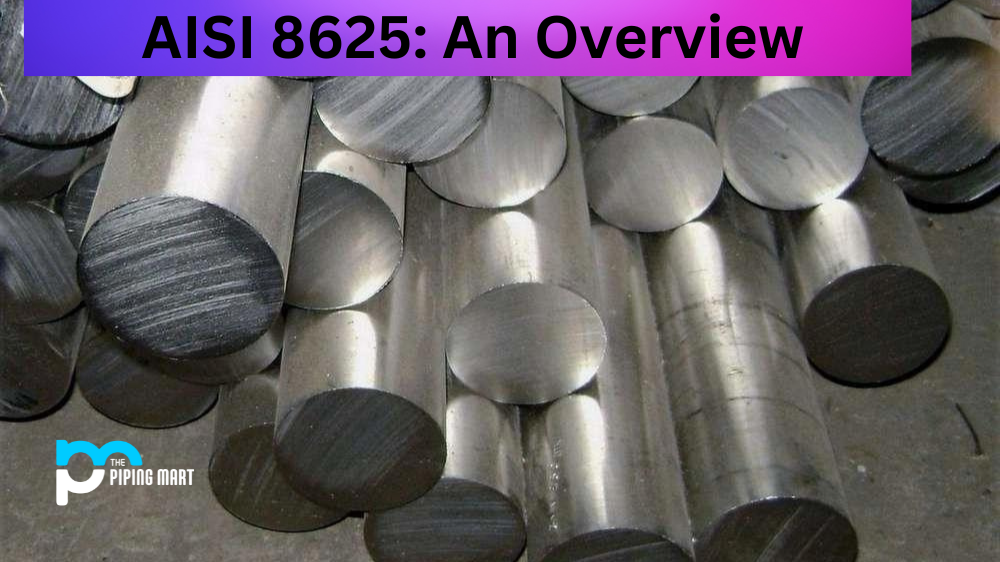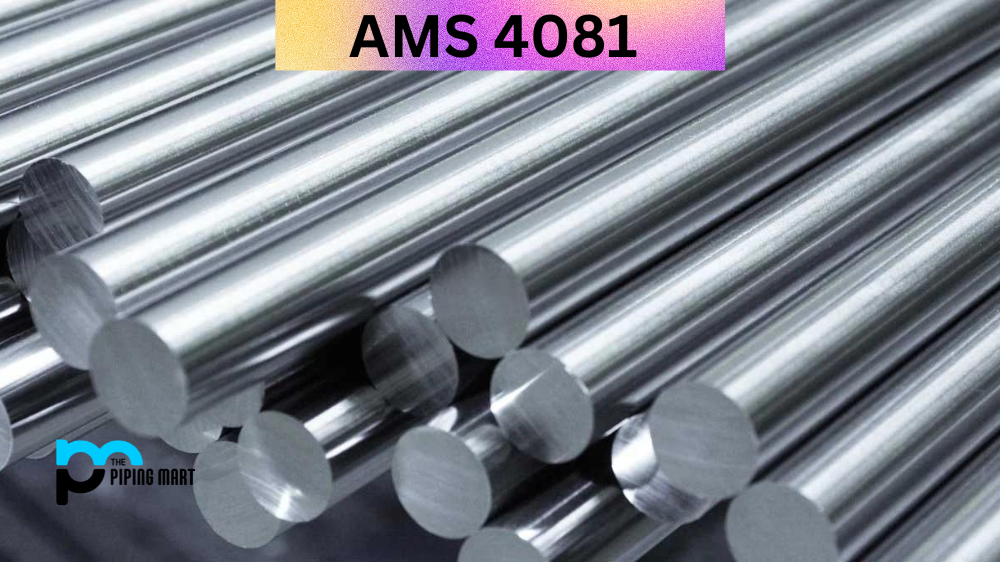UNS G86250 is a high-quality alloy steel with a combination of heat and corrosion resistance. It has excellent strength, wear resistance, and machinability, making it an ideal material for many industrial applications. AISI 8625 Alloy Steel, also known as UNS G86250, is a popular material choice for industrial and commercial applications. With its excellent combination of strength, durability, and toughness, it’s no wonder why AISI 8625 has gained a reputation as a reliable and versatile steel alloy. Its unique composition of carbon, manganese, chromium, molybdenum, and nickel makes it exceptional properties suitable for various uses, including machinery and equipment, construction, and more. Whether you’re in the engineering, manufacturing, or construction industry, AISI 8625 Alloy Steel is worth considering for your next project. In this article, we will look at the uses, corrosion resistance, heat resistance, and heat treatment of AISI 8625 in more detail.
What Forms of AISI 8625 is Available at Piping Mart?
- Nut
- Bar
- Bolt
- Pipe
- Screw
- Tubing
- Valves
- Washers
- Flanges
- Fasteners
- Electrodes
- Stud Bolts
- Sheet Plates
- Pipe Fittings
- Forged Fitting
- Instrumentation Fittings
AISI 8625 Composition
| Element | Content (%) |
|---|---|
| Iron, Fe | 96.895 – 97.97 |
| Manganese, Mn | 0.700 – 0.900 |
| Chromium, Cr | 0.400 – 0.600 |
| Nickel, Ni | 0.400 – 0.700 |
| Carbon, C | 0.230 – 0.280 |
| Silicon, Si | 0.150 – 0.300 |
| Molybdenum, Mo | 0.150 – 0.250 |
| Sulfur, S | ≤ 0.0400 |
| Phosphorous, P | ≤ 0.0350 |
AISI 8625 Physical Properties
| Properties | Metric | Imperial |
|---|---|---|
| Density | 7.85 g/cm3 | 0.284 lb/in³ |
AISI 8625 Mechanical Properties
| Properties | Metric | Imperial |
|---|---|---|
| Bulk modulus (typical for steel) | 140 GPa | 20300 ksi |
| Shear modulus (typical for steel) | 80.0 GPa | 11600 ksi |
| Elastic modulus | 190-210 GPa | 27557-30458 ksi |
| Poisson’s ratio | 0.27-0.30 | 0.27-0.30 |
| Hardness, Brinell (annealed and cold drawn) | 179 – 223 | 179 – 223 |
| Hardness, Knoop (converted from Brinell hardness) | 223 | 223 |
| Hardness, Rockwell B (converted from Brinell hardness) | 93 | 93 |
| Hardness, Rockwell C (converted from Brinell hardness. Value below normal HRC range, for comparison only) | 13 | 13 |
| Hardness, Vickers (converted from Brinell hardness) | 211 | 211 |
| Machinability (annealed and cold drawn. Based on AISI 1212 steel. as 100 average) | 60 | 60 |
AISI 8625 Thermal Properties
| Properties | Metric | Imperial |
|---|---|---|
| Thermal conductivity (typical steel) | 46.6 W/mK | 323 BTU in/hr.ft².°F |
AISI 8625 Equivalents
- ASTM A29
- ASTM A322
- ASTM A331
- ASTM A519
- ASTM A752
- ASTM A829
- SAE J1397
- SAE J404
- MIL SPEC MJL-S-16974
- SAE J770
AISI 8625 Uses
UNS G86250 is well-known for its excellent strength and durability. Because of these properties, it is used in a variety of industries, including automotive, aerospace, military equipment, medical devices, and more. It is also used to make components for power plants, such as valves and pipes. Additionally, it can be used to create parts for oil rigs or marine vessels.
AISI 8625 Uses in Industries
Automotive Industry
One of the most common uses of AISI 8625 steel is in the automotive industry. This type of steel is often used to make critical components such as gears, shafts, and bearings due to its high strength and wear resistance. It also has good machinability, making it easier for manufacturers to work with.
Aerospace Industry
AISI 8625 steel is also widely used in the aerospace industry for its high strength-to-weight ratio and excellent fatigue resistance. It is commonly used in aircraft landing gear, engine components, and structural parts.
Construction Industry
AISI 8625 steel is often used in the construction industry for structural applications such as beams, columns, and bridges. Its high strength and durability make it a popular choice for building projects requiring strong, long-lasting materials.
Oil and Gas Industry
Due to its corrosion resistance properties, the oil and gas industry also utilizes AISI 8625 steel. This type of steel can withstand harsh environments and exposure to chemicals, making it suitable for use in pipelines, drilling equipment, and other oilfield components.
Manufacturing Industry
AISI 8625 steel is commonly used in various manufacturing processes due to its versatility and ability to be heat-treated for different hardness levels. It can be found in various products, such as tools, machinery parts, and industrial equipment.
Defence Industry
Due to its high strength and toughness, AISI 8625 steel is also used in the defence industry for military vehicles, weapons systems, and armour plating. Its ability to withstand impacts and resist deformation makes it a valuable material for protecting personnel and equipment on the battlefield.
AISI 8625 Corrosion Resistance
The alloy steel has good corrosion resistance due to its ability to form protective oxide layers on its surface when exposed to air or water. This makes it an ideal choice for use in parts that are frequently exposed to corrosive environments, such as valves or pipes. Furthermore, it can be coated with zinc or other metals to further enhance its corrosion resistance if necessary.
AISI 8625 Heat Resistance
The steel also has excellent heat resistance due to its high chromium content, which helps protect against oxidation at high temperatures. Furthermore, the nickel content contributes additional protection against oxidation up to 800 degrees Celsius (1472 degrees Fahrenheit). The alloy steel can also resist scaling at temperatures up to 1150 degrees Celsius (2102 degrees Fahrenheit).
AISI 8625 Heat Treatment
AISI 8625 can be hardened through both cold working and heat treatment processes. The most common method is through carburizing followed by quenching and tempering, which provides superior strength and wear resistance when compared to other hardening processes such as nitriding or induction hardening. The alloy steel can also be normalized or annealed depending on the application requirements.
AISI 8625 Machining
The alloy steel has good machinability, which makes it easy to machine into complex shapes with minimal waste material produced during the process. However, it is important to note that high speeds should not be used during machining due to the risk of work hardening, which could significantly reduce the part’s yield strength.
Conclusion:
AISI 8625 is a highly versatile alloy steel that offers a combination of heat and corrosion resistance as well as good machinability, making it suitable for many different industrial applications, from automotive parts to oil rigs and marine vessels. Its excellent strength, wear resistance, heat resistance, and corrosion resistance make it an ideal choice for parts that need durability in harsh environments. With proper heat treatment processes, the alloy steel can be hardened for even more durability. Overall, AISI 8625 offers superior performance in almost any industrial setting.
Meet Heer, a dynamic and driven writer learning tricks of her trade in the metal industry. With a background in Digital Marketing, Heer brings a unique perspective to her writing, sharing valuable insights. Apart from blogging she like reading and hiking.




